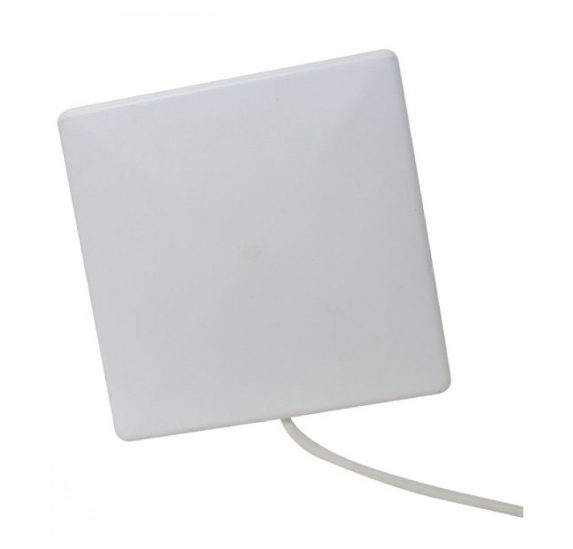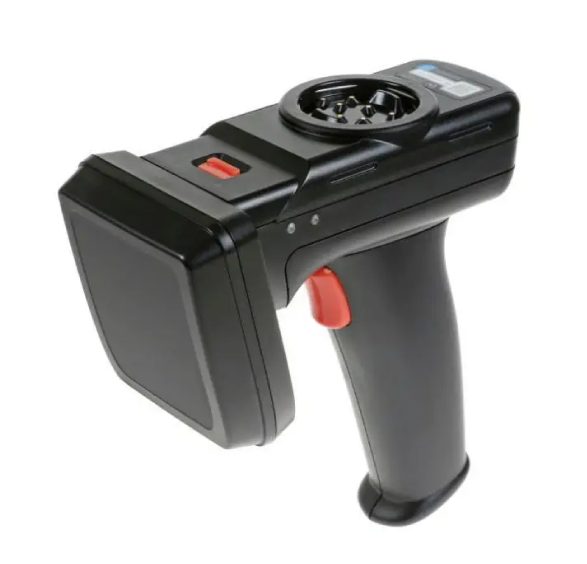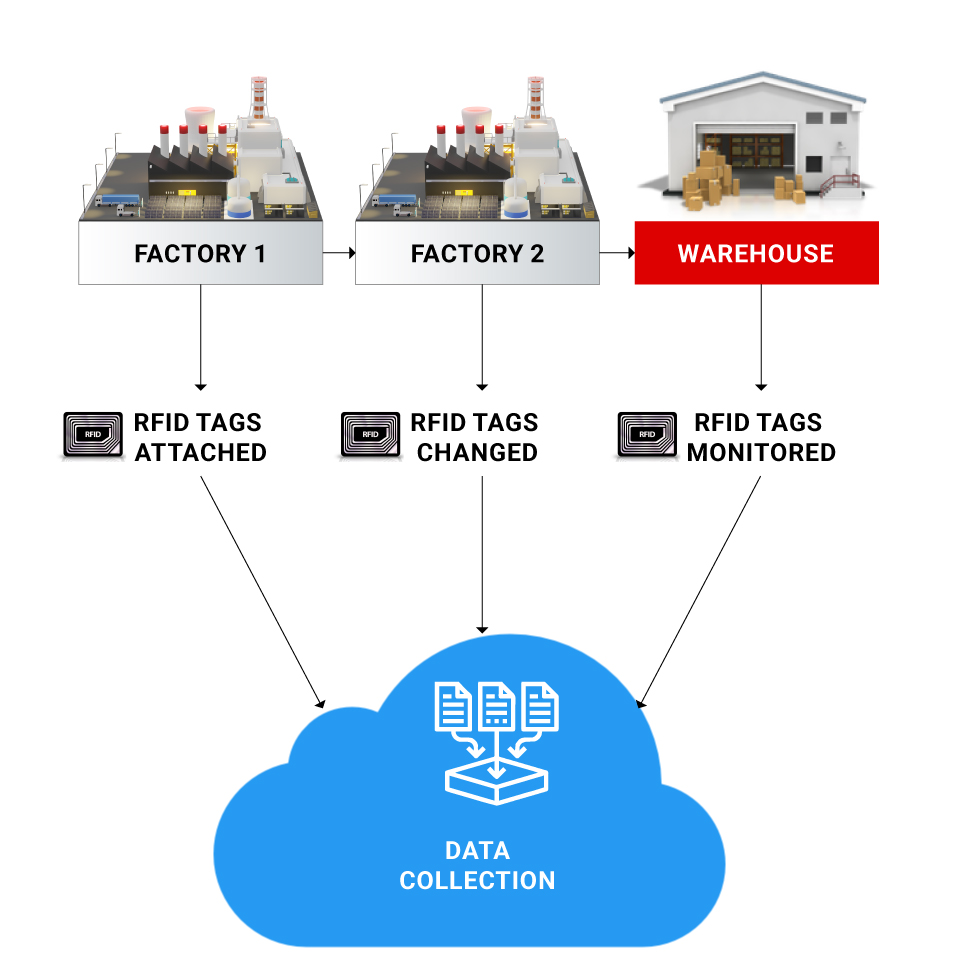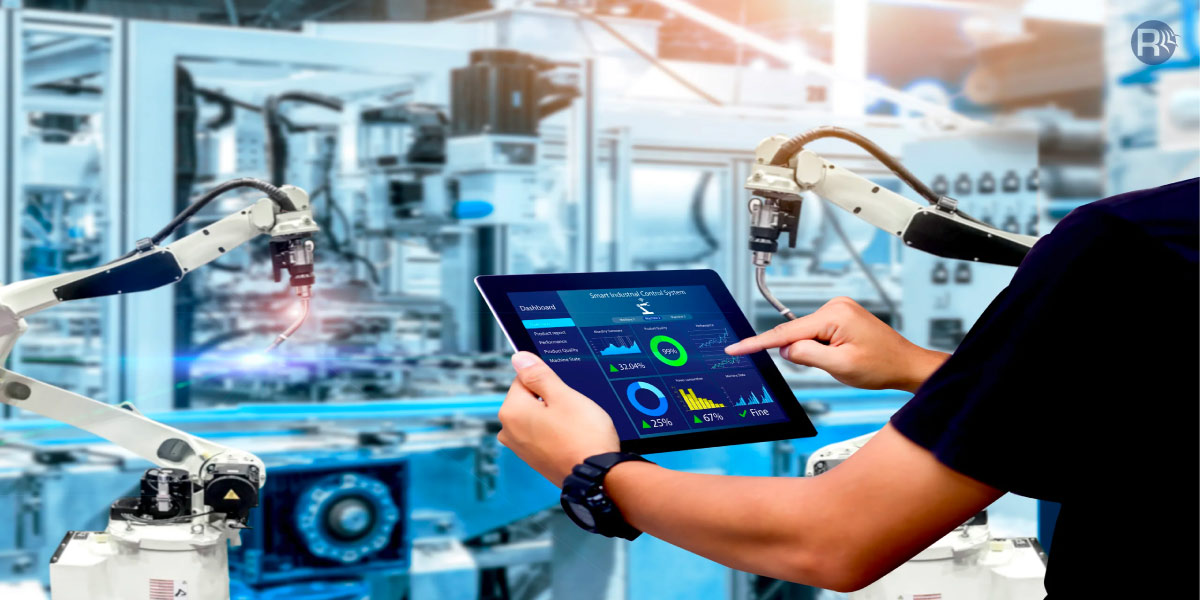Supply chain and inventory management have never been more critical and widely acknowledged in improving a business’s bottom line. Traditional inventory management methods are on the verge of becoming obsolete as businesses increasingly adopt innovative technology like IoT (Internet of Things) to streamline their supply chains.
As early as 2017, Gartner[1] stated that the supply chains in their global top 25 list utilize digital transformation technologies, including IoT and predictive analysis. Again in 2022, they mentioned in the Hype Cycle for Supply Chain Strategy that IoT is one of the innovative technologies revolutionizing supply chains. They discussed how IoT-connected devices independently place orders and have contributed to creating a ‘Machine Customer[2] (a nonhuman economic actor that makes purchases against payment). And that’s not all. Take a look at some quick facts emphasizing the importance of IoT in inventory management:
- The number of IoT devices worldwide will increase from USD 9.7 Bn in 2020 to over USD 29 Bn (almost triple) by 2030, forecasts Statista[3].
- The global market for IoT in warehouse management will grow at a CAGR of 13.1% from USD 12.13 Bn in 2023 to USD 28.79 Bn by 2030[4], and its inventory optimization segment will rise the highest during the forecast period, according to Fortune Business Insights.
- Data Bridge Market Research[5] suggests that the inventory management software market will rise at a CAGR of 6.62% from USD 1.53 Bn in 2021 to USD 2.56 Bn by 2029.
IoT devices allow businesses to connect and monitor inventory like never before. This technology facilitates real-time visibility and data accuracy, helping businesses to optimize inventory management.
This blog discusses the concept and use of IoT in Inventory Management, its impact, how it works, its benefits, challenges, and more. So, let’s get started!
Before we get into the details of how IoT is transforming inventory management, let’s first understand the concepts of IoT and Inventory Management.
What is The Role of IoT in Inventory Management?
The Internet of Things in inventory management represents a correlated ecosystem in which physical items are embedded with smart sensors as they transit through the supply chain. These smart sensors transmit real-time updates on their location, temperature/ humidity in case of cold storage, handling speed, and other key parameters via the internet.
Implementing IoT in inventory management automates and streamlines the tedious and time-consuming traditional inventory tracking, which is prone to human errors. The seamless real-time communication between sensors and RFID tags helps identify bottlenecks, increases efficiency, and reduces lead time.
So, what’s the big deal about having so many interconnected devices? The essence lies in this technology’s capability of providing automation and increased efficiency for individuals and businesses. Imagine your alarm clock waking you up at 5 a.m. and notifying your coffee maker to brew fresh coffee simultaneously. This is the level of convenience it brings for businesses as well. For example, IoT devices with sensors ensure quality control of stored products in warehouses or transit by monitoring and reporting environmental conditions like temperature, humidity, movement, handling speed, and more.
If you wish to explore how smart retailing is leveraging RFID and GPS technology to track products through the enterprise supply chain, please read our blog post on IoT in the retail industry.
IoT in Inventory Management: How it Works?
To better understand how IoT works for inventory management, you must understand its different components. Let us quickly run you through what goes on in the background of IoT-based solutions.
How Are Technologies Enabling Smart Inventory Management
Sensors and RFID (Radio Frequency Identification) tags are crucial in IoT-based inventory management systems. So, a business using this system equips each inventory item with an RFID tag. This tag contains a unique identification number as well as relevant digital data. An RFID reader is required to scan these tags, derive information, and send the information to the cloud-based connected system for processing.
The cloud-based system receives the information shared by the RFID reader. It analyzes the data, combines it with the reader’s location details, and applies a time stamp. This integrated data helps the cloud-based system to determine the exact location of each inventory item and give real-time updates on inventory movements.
This technology helps businesses enhance inventory visibility and remotely monitor and manage inventory using computers, laptops, or mobile apps. The RFID technology mainly consists of RFID tags, RFID antennas, and RFID readers:
RFID Tags
These are small tracking devices that use low-power radio frequency to transfer data. Each tag is provided an Electronic Product Code (EPC) for unique identification (ID) of the item to which they are attached. You can use these tags on all items, including packages, raw materials, finished products, crates, and pallets. They allow instant and automated inventory scanning, which helps track and monitor inventory more efficiently. RFID tags are passive as they don’t have a power source and utilize electromagnetic waves received from RFID readers to transmit data. So, once the reader scans the RFID tag, the radio waves from the reader activate the tag to collect and store the data.


RFID Antenna
It enables communication and data exchange within the RFID system. It harnesses the power of radio waves coming from the RFID reader to energize the RFID tags. So, the RFID tags become active and transmit information to the antenna, which flows further to the RFID reader.
RFID Reader
It is a handheld or fixed instrument that reads the IDs from RFID tags and also writes to them. It transmits the information received from the tags to the cloud-based system after adding the tag’s location and scan time.

How to Use IIoT and RFID for Better Inventory Management?
IoT based inventory management systems combine RFID and IIoT (Industrial Internet of Things). IIoT uses smart sensors to give manufacturers complete visibility of their industrial processes. Its role in inventory management is to turn the data collected by RFID into meaningful insights. For example, IIoT forecasts raw material requirements for the next production cycle based on inventory movement.
Let’s discuss an inventory management system based on IIoT and RFID with an example. Suppose a company has its manufacturing process spread across two premises. Factory 1 manufactures the parts, and Factory 2 assembles them into a final product. So, when raw materials enter Factory 1, they get RFID tags with unique IDs. Their movement is monitored and tracked as they progress in production. Separate RFID readings are taken at every stage, and this information is stored in the cloud-based system, which could be the company’s data warehouse. The cloud-based system analyzes the data at every stage and sends notifications if items are missing or misplaced.

When the items are assembled into a final product in Factory 2, they get new RFID tags. The tags on individual raw materials within the product are removed or kept based on the company’s production requirements. As the products move from one department to another, their tags are scanned, and information is collected and analyzed at every stage.
Further, the same procedure is followed when moving the products to the warehouses and finally to the point of sale. It helps the manufacturing business ensure high-level inventory, production, quality control, and management.
Impact of IoT on Inventory Management
As IoT technology advances daily, new-generation sensors offer better performance and cost advantages. Gaining real-time visibility into their inventory and operations enables businesses to manage their supply chain successfully. Let’s explore key ways to understand how IoT is making a major impact on inventory management:
High-level Connectivity
IoT sensors or RFID tags can be fixed on all inventory items, shelves, and containers. And they can be tracked in real-time using mobile apps. This centralized facility builds advanced connectivity between things and the people in charge of inventory management.
Real-time Inventory Monitoring and Analysis
The connected smart devices transmit real-time information concerning the location, time, ID number, and state of the inventory item. So managers can get real-time visibility. Also, the cloud-based system analyzes the data simultaneously and provides notifications on the item’s status, like missing, in production, misplaced, etc.
Discovering Trends
Integrating Artificial Intelligence (AI) capabilities into an IoT-based inventory management system helps complex AI algorithms analyze the data collected by IoT devices. It helps unearth specific trends like inventory utilization at every production level, the speed of movement of individual products from warehouses to the point of sale, and more. It helps the system handle advanced functionalities like auto-ordering of replacement inventory.
Optimal Warehouse Management
With increasing realty rates and rising fixed maintenance costs, managing the available space optimally in warehouses is critical for businesses. Using the Internet of Things in inventory management through smart shelves and storage bins helps enhance space utilization in warehouses. They track and communicate inventory levels, which helps increase visibility into inventory and reduces shrinkage and waste.
Streamlined Operations
IoT inventory tracking enables automated processes for inventory and quality management. It automates inventory tracking and replenishment, which helps streamline warehouse operations. It also helps warehouse workers carry out routine procedures faster and maintain accuracy. Apart from workflow automation, IoT solutions help determine the turn-around time at every production stage as well as identify bottlenecks in manufacturing operations. They could include delays in the availability of necessary raw materials, causing stoppages in the production line. So, utilizing IoT for inventory management can assist in resolving such issues and synchronizing operations.
Benefits of IoT in Inventory Management
Utilizing the Internet of Things technology in inventory management offers numerous advantages and opportunities for organizations. Here are some significant benefits:
Automation in Inventory Tracking and Reporting
IoT-based devices transmit the collected data to the cloud-based system (data warehouse). By automating time-consuming routine tasks like tracking and reporting, IoT technology saves quality employee time that was earlier spent on manually collating this information. Since information is updated instantly in real-time, there’s no risk of duplication and errors, which means less time on problem-solving and translates into profitability.
Improved Performance and Processing Speed
Businesses increasingly integrate technologies like IoT, AI, Robotics, and Augmented Reality (AR) to manage warehouse and logistics operations better. The right inventory management software can help you automate almost all inventory and order management aspects. It helps improve employee performance with enhanced coordination, relevant data availability, and the ability to make prompt and informed decisions. With the connected IT infrastructure, the speed of internal and external processes increases, and the organization works with clockwork precision.
Predictive Maintenance
Integrating the data collected by IoT-based devices with the company’s ERP system enhances record-keeping and helps the cloud-based system conduct predictive analysis. So, your company can use historical data analysis and economic trends to identify slow- and fast-moving products, forecast demand for individual products, determine the reorder quantity and timing, etc. This functionality also ensures that your employees get updated and accurate data to work with daily.
Meet Regulatory Compliance
As IoT devices streamline the management and traceability of inventory, they gather data required to comply with regulations. Integrating IoT devices with the company’s ERP system helps meet local, state, and global supply chain compliance.
Reduction in losses
With enhanced inventory management, the instances of misplaced or missing items or sensitive products getting damaged decrease. Temperature compliance monitoring, energy consumption, and automated ordering further eliminate stock-out emergencies and reduce waste. As IoT devices also notify maintenance and downtime requirements of equipment, the chances of their premature wear and tear reduce. Also, continuous monitoring increases warehouse security and helps mitigate risks like theft, fire, etc.
Challenges of Implementing IoT in Inventory Management
IoT facilitates operational efficiency and smart decision-making by collecting and analyzing high volumes of data. It utilizes this data to provide valuable and actionable business insights. However, you may encounter some challenges during inventory management using IoT.
- Ensuring that the RFID tags attached to raw materials or components do not interfere with and negatively impact manufacturing is critical.
- RFID readers encounter no issues when scanning across non-metallic materials. So, they work well in most settings. However, the reading is not always accurate for environments where the RFID reader must scan across water and other liquids or metallic materials.
- As IoT solutions come at a cost, you must check if your products or services are priced high enough to cover this cost or if you can justify incurring these costs.
Real-life Use Cases of IoT for Inventory Management
With automated IoT inventory tracking and predictive analysis, businesses experience improved operational efficiency and encounter growth opportunities. So, it’s no surprise that many popular brands have implemented IoT for inventory management. Here are a few examples:
- DHL, a well-known logistics company, delivers top-quality and fast deliveries across nations. It utilizes multiple automated IoT systems in its smart warehouses for transparency, inventory controls, and warehouse management, enabling agile and cost-effective supply chain operations.
- Amazon, the eCommerce giant, uses IoT-based solutions for warehouse management. IoT devices free their employees from other important tasks by making their workflow stable and smooth.
- Alibaba, another large eCommerce brand, uses IoT-based inventory management solutions to optimize internal processes and succeed in quick and trouble-free deliveries in the global market.
Partner with Rishabh Software To Build IoT-Driven Inventory Management Solution
Being the most renowned IoT Development Company and services provider, our highly skilled team of IoT professionals brings domain expertise to build end-to-end IoT-based solutions. We are skilled and have the in-house capability to transform your traditional inventory management system into modern IoT-based architecture. Whether you’re a retail startup or an enterprise planning to implement an asset-tracking solution to get real-time information and visibility fetched by RFID tags, we can lend a helping hand. We can guide you through every development stage, from road mapping to evolution.
Summing Up
IoT is revolutionizing inventory management with greater intelligence and efficiencies by the minute. By transforming inventory management into a strategic asset and value driver, IoT technology is helping businesses stay relevant in the highly competitive and ever-changing market and even allowing them to create a competitive edge. Now that you know how IoT based inventory management works, its benefits, and challenges, you can make informed decisions about transforming your traditional inventory management. Consult our expert IT professionals to schedule a discussion today.
Frequently Asked Questions
Q: How is IoT revolutionizing inventory management?
A: IoT is revolutionizing inventory management by providing real-time visibility into stock levels, connectivity, and automation like never before. It helps businesses run their supply chains seamlessly by providing enhanced data accuracy and reliability. Successful inventory management requires streamlined processes and complete visibility. So, IoT solutions connected with sensors offer real-time monitoring of goods, location, and even environmental conditions. It helps smart warehouses automatically control quality, re-order supplies, and know exactly where each item is located or when it is moved. It increases the overall efficiency of inventory management. IoT further helps in cost savings by reducing manual processes and associated errors.
Q: What issues does the IoT technology address with traditional inventory management?
A: Traditional inventory management practices include manual inventory tracking and managing inventory levels. They are usually time-consuming and marred with human errors. Besides, it is difficult to optimize them due to a lack of automation. Misplaced items become a significant issue, and these processes are decentralized. This ultimately adversely affects the supply chain. IoT-based inventory management automates tasks and centralizes processes while also being cost-effective. It provides real-time monitoring for better inventory management. With accurate data, businesses can make timely and informed decisions. IoT technology facilitates predictive analysis that helps with demand forecasting. This results in increased speed, reduced errors, 360-degree visibility, and a smoothly running supply chain.
Footnotes:
1. https://www.gartner.com/en/newsroom/press-releases/2017-05-25-gartner-announces-rankings-of-the-2017-supply-chain-top-25
2. https://www.gartner.com/en/newsroom/press-releases/2022-09-12-gartner-hype-cycle-for-supply-chain-strategy-shows-supply-chain-resilience-at-peak-of-inflated-expectations
3. https://www.statista.com/statistics/1183457/iot-connected-devices-worldwide/
4. https://www.fortunebusinessinsights.com/iot-in-warehouse-management-market-107383
5. https://www.databridgemarketresearch.com/reports/global-inventory-management-software-market










 30 Min
30 Min


